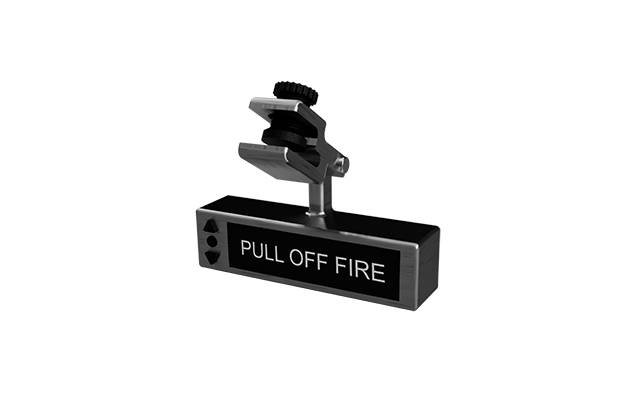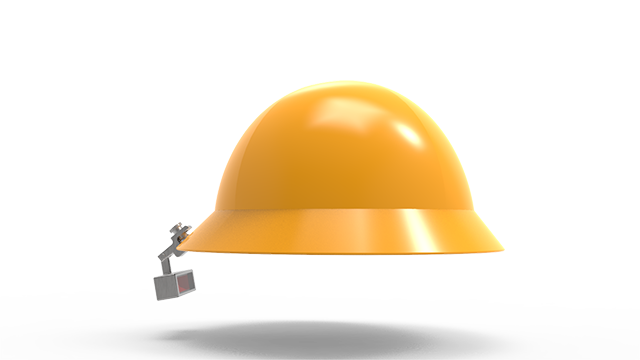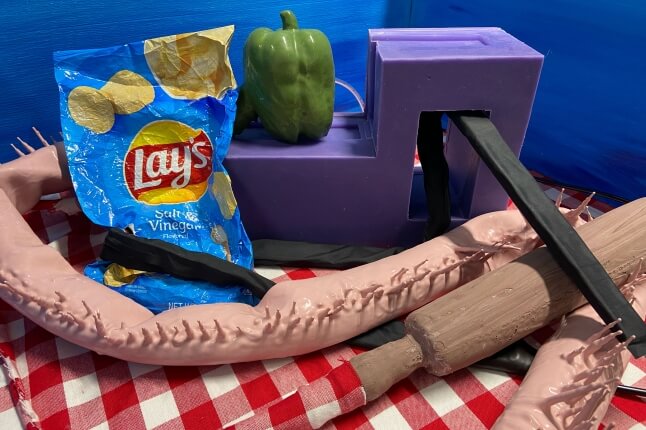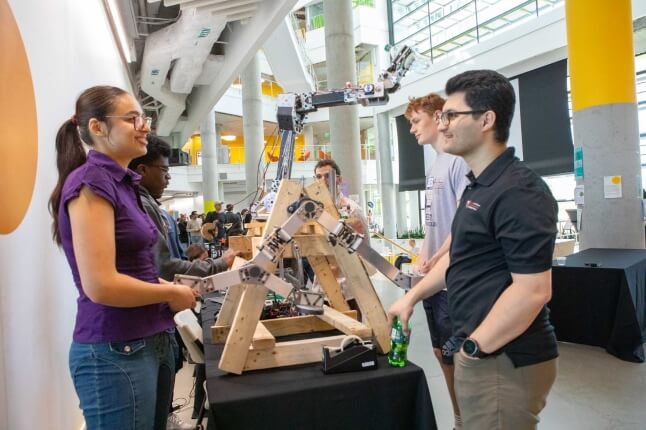News
The INFERNODES team (from left) included Katrina Armistead, Kelsey Burhans and Margaret Zhou
Nearly 10,000 wildfires ripped across 4.2 million acres in California during 2020, the most destructive wildfire season ever recorded. When the smoke finally cleared, more than 4 percent of land throughout the state—an area about the size of Rhode Island—lay in ruin.
The treacherous task of battling those deadly wildfires often falls upon hotshots and smokejumpers—elite firefighters trained to respond to blazes in remote areas with little or no logistical support.
Due to the isolated environments in which they work, these firefighting teams face frequent communication challenges. Four Harvard graduate students set out to develop a device that could streamline communications, helping firefighters better control wildfires and reducing their risk of injury.
“Out there in the wilderness, these firefighters have no internet access, so a lot of the tools that are available to civilians are not available to hotshots and smoke jumpers,” explained Margaret Zhou, a student in the master’s in design engineering program (MDE), offered jointly by the Harvard John A. Paulson School of Engineering and Applied Science and Graduate School of Design. “They still use radio, and it is pretty outdated. The radio is constantly backlogged with information trying to get from one group to another.”
For their collaborative MDE studio project, Zhou and teammates Katrina Armistead, Kelsey Burhans, and Maya Chatila developed INFERNODES, an interconnected, frequency-based, passive communication system of lightweight internet-of-things devices that attach to firefighters’ helmets.
Their project was one of 10 finalists in the recent Beat the Blaze Hackathon, sponsored by the National Security Innovation Network, which challenged teams to develop creative solutions to deliver full situational awareness to wildfire first responders.
The INFERNODES devices are about 3 inches long and 1 inch wide and weigh only 7 ounces. Each unit has a small screen that can display automated messages of 20 characters or less.
This rendering shows an INFERNODES device displaying a message.
“These firefighters are endurance athletes. They are in the field for days or weeks at a time and can only carry so much on their backs,” Burhans said. “We needed to develop something small and also something that doesn’t use a lot of battery life.”
One of the units in a set of 20 has satellite uplink capability. The fire command center transmits messages to that unit, which are pushed via radio frequency signals to the other 19 units in the set. In addition, each unit has a GPS that the command center can use to locate firefighters.
Passive data collection through GPS is critical for tracking wildfires and keeping firefighters safe, Zhou said. While GPS is priority number one, the devices are also designed to enable the use of other data collection widgets which could be connected in the future to gather information on health vital signs or weather patterns.
“One of the main challenges we faced was how to make the communication apparent, but not obtrusive,” Armistead said. “We didn’t want to interfere at all with their work. We didn’t want it to take away one of their hands and we didn’t want it to block their line of vision. We had to do some testing regarding sizing and figure out how to make it a bit modular so you can attach it wherever works best for you on your helmet and also flip it up if it is getting in the way.”
This image shows how an INFERNODES device could be clipped to a firefighter's helmet.
Participating in the hackathon introduced the team to experts who provided guidance and input that helped them develop a device that could meet the unique challenges of fighting remote wildfires.
The students also learned a great deal about wildfire fighting—from the nuanced language firefighters use to describe how fires move to the lack of government funding they receive to the sheer number of groups that can collaborate to fight one fire.
“We met some really incredible people through the hackathon and as we worked on this project. They were really excited to talk and to help in any way they could,” Armistead said. “To create something that could help save lives and protect communities was very rewarding.”
They plan to put the lessons they learned to good use as they seek to tackle other multifaceted problems that have a significant impact on people and the environment.
Topics: Design
Cutting-edge science delivered direct to your inbox.
Join the Harvard SEAS mailing list.
Press Contact
Adam Zewe | 617-496-5878 | azewe@seas.harvard.edu





